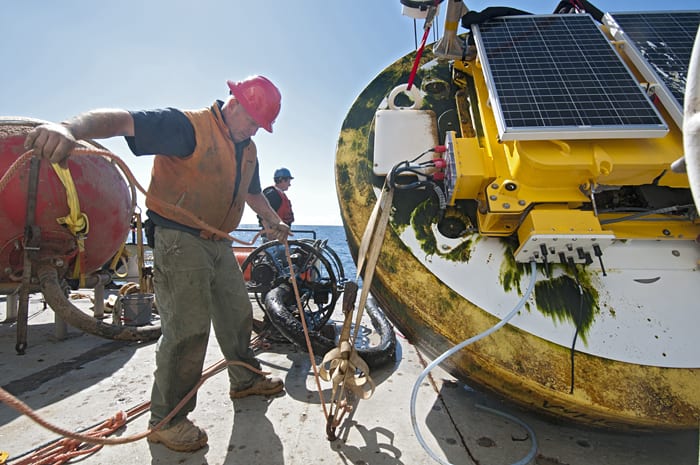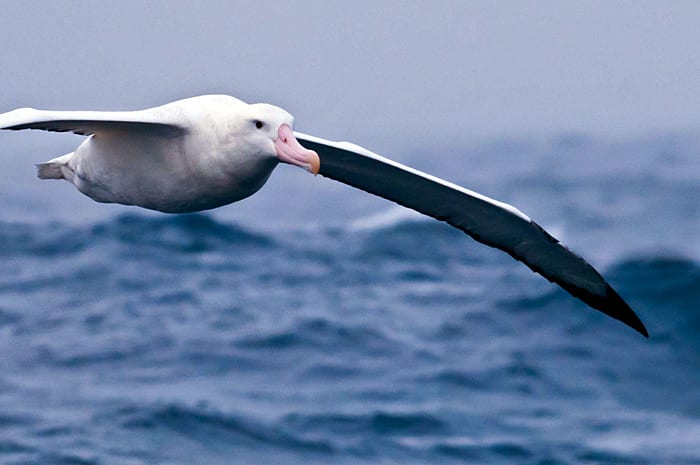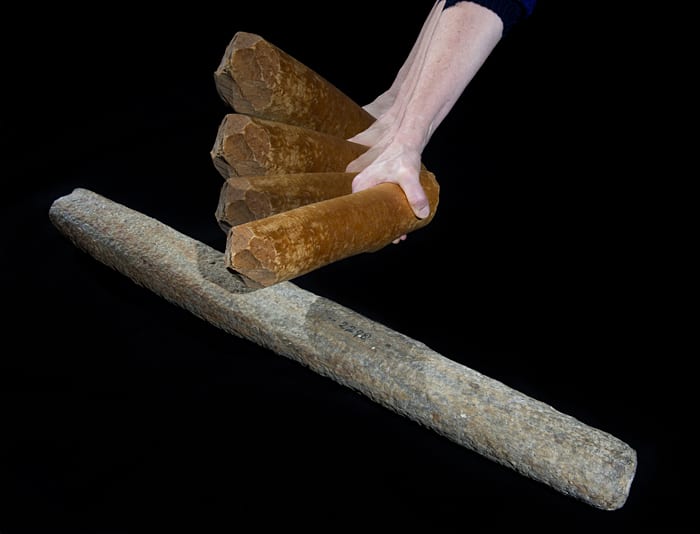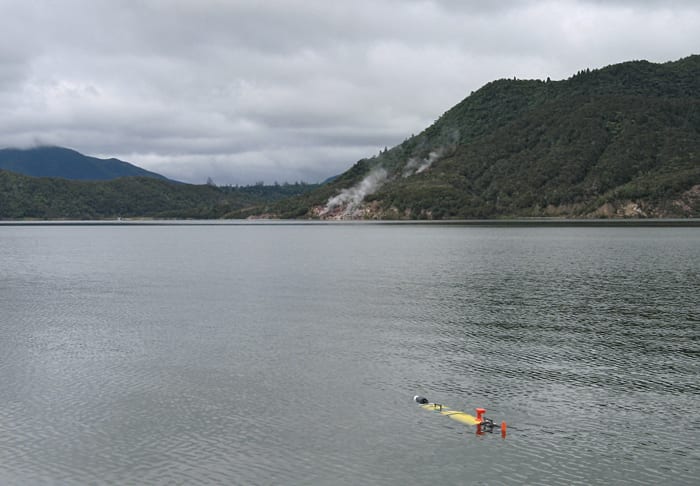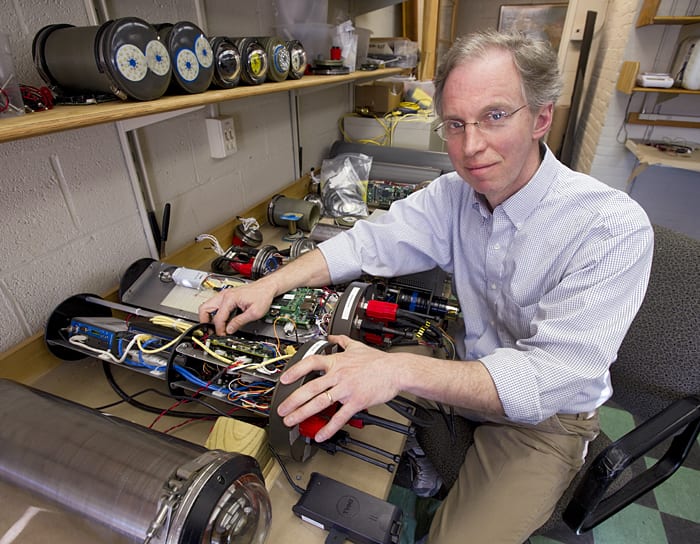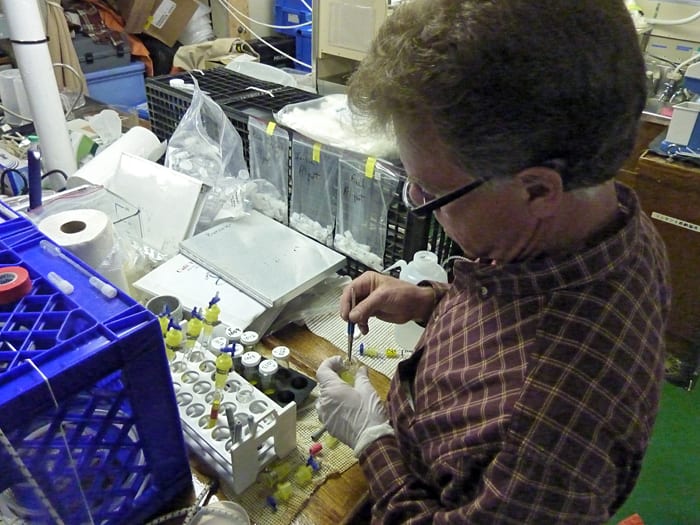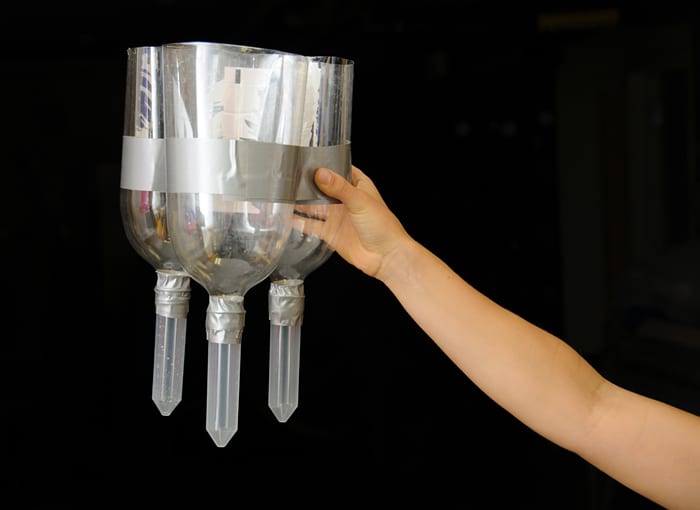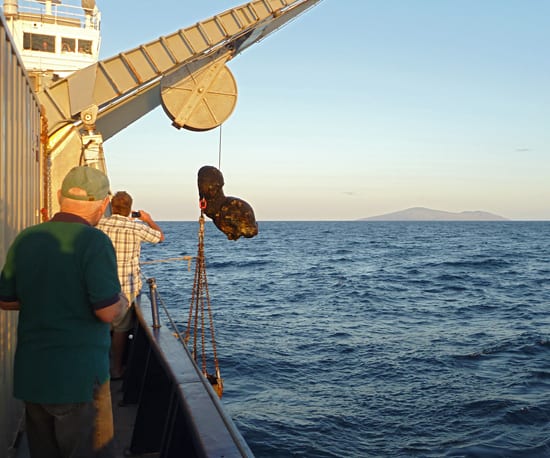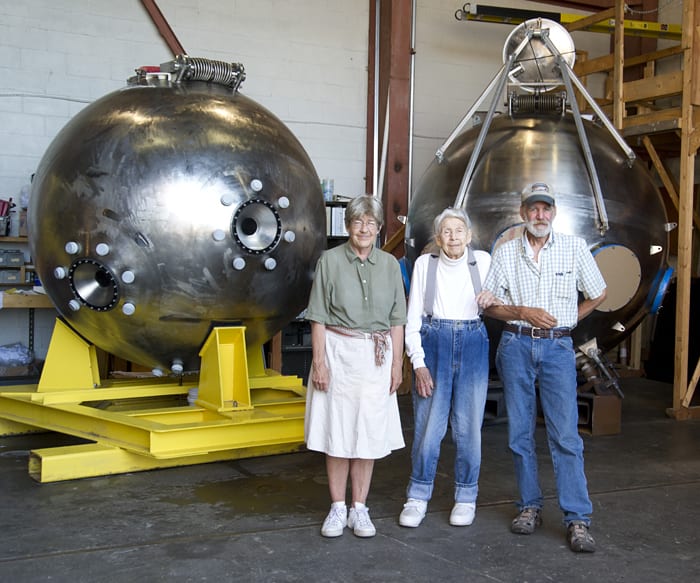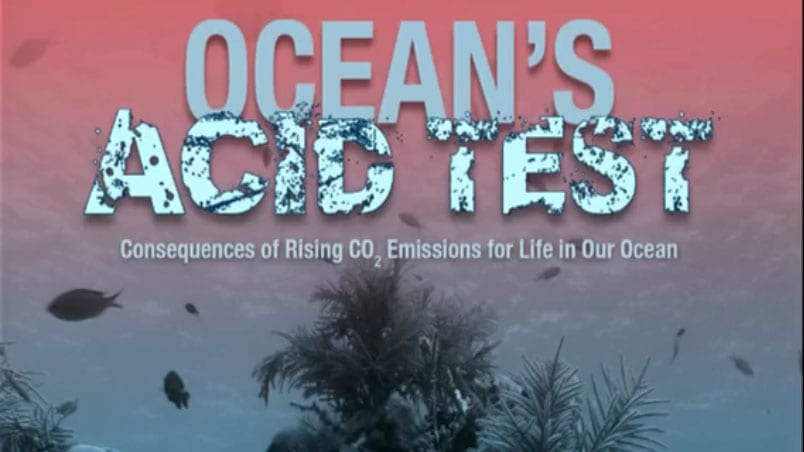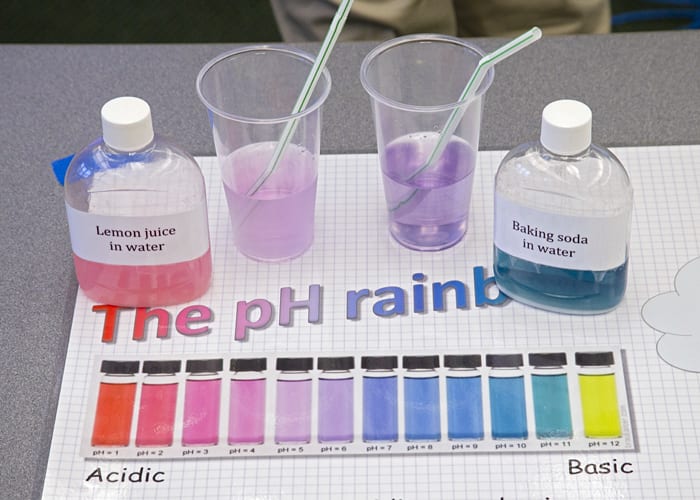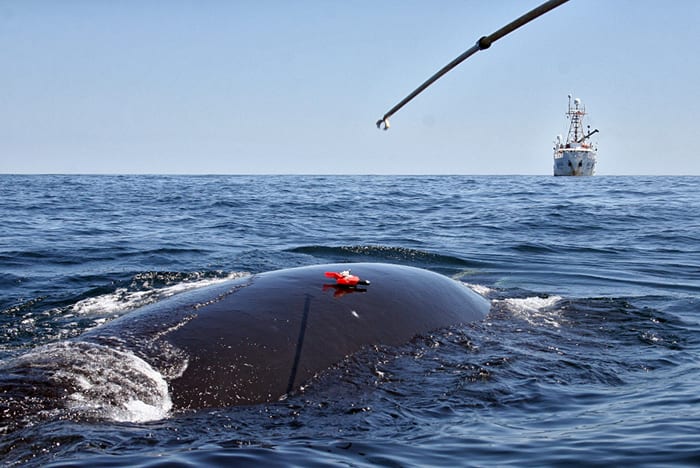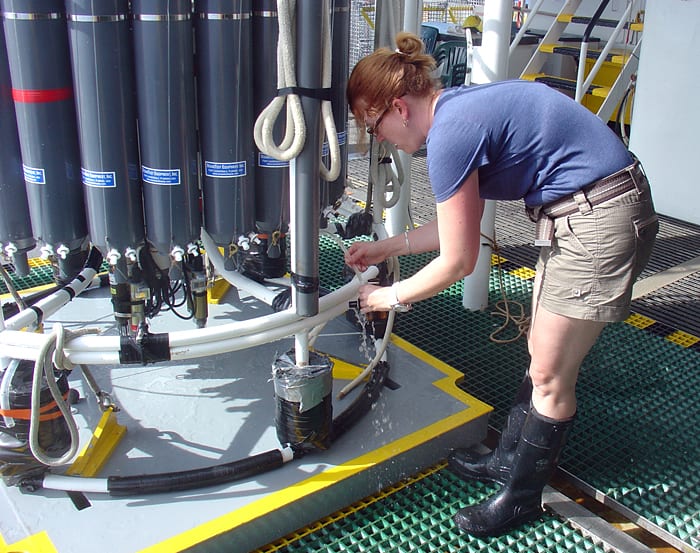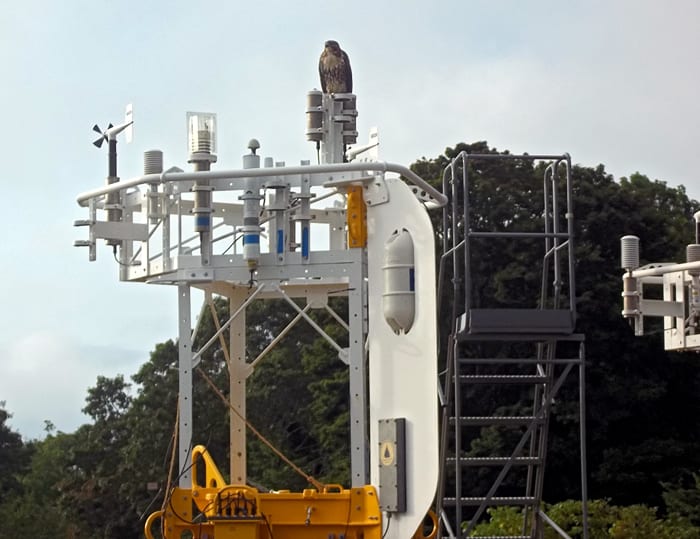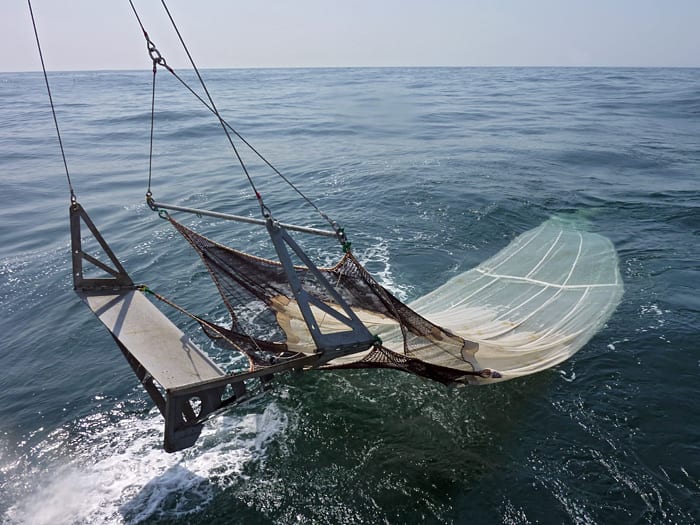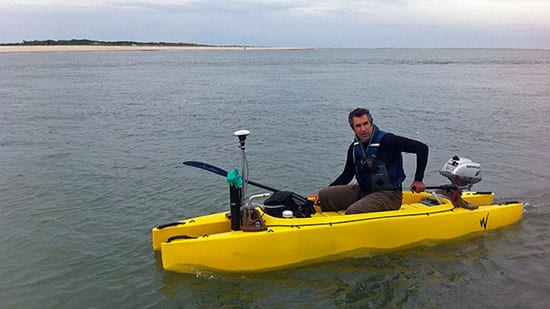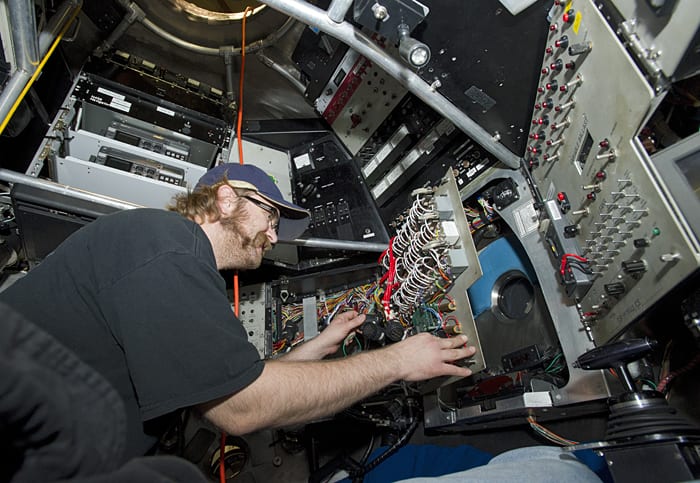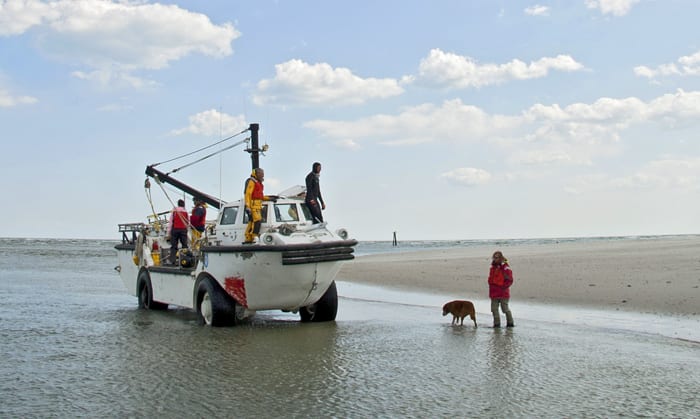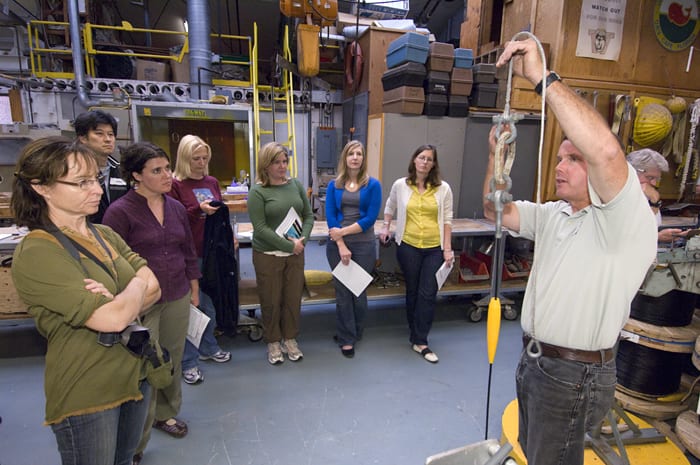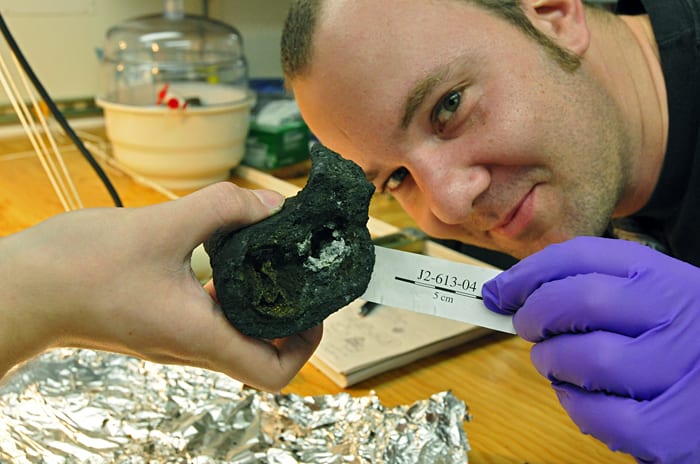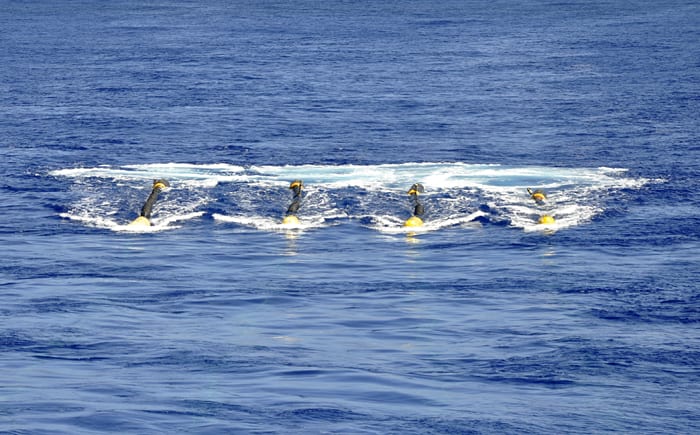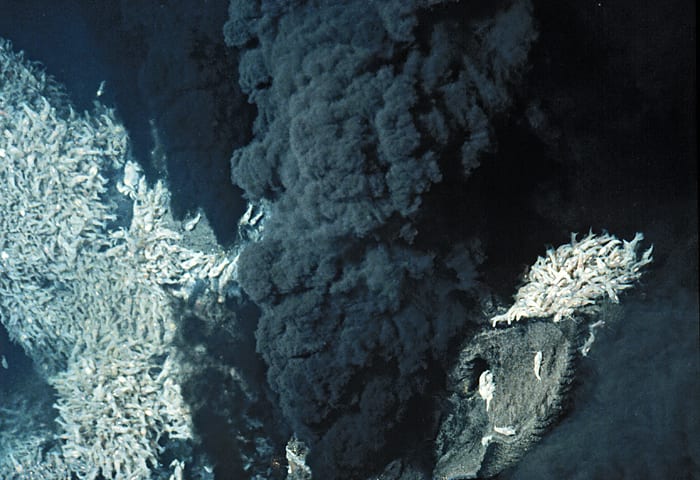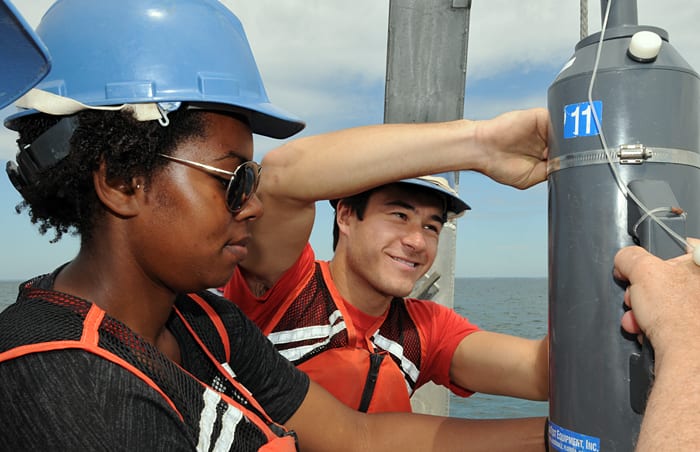Multimedia
Bringing them Home
WHOI mooring operations specialist Jim Ryder secures a surface buoy to the deck of RV Knorr during a cruise to recover instruments deployed in October 2011 as part of the…
Read MoreMiracles of Flight
Albatrosses captivated scientist Philip Richardson during his physical oceanography career at WHOI, where he watched the large seabirds soar near the decks of traveling research vessels. After he retired in 1999,…
Read MoreRock On!
A person uses a piece of wood to strike a lithophone, an instrument made of solid stone by Native Americans between 1,000 and 2,000 years ago. When struck, the lithophone…
Read MoreIn Search of Lost Treasures
A REMUS 100 from Woods Hole Oceanographic Institution makes its way across Lake Rotomahana, New Zealand, in January 2011. Geologists in New Zealand enlisted the help of WHOI scientist Dan…
Read MoreTalking Through Water
Scientists strive to quickly recover data after it is collected from ocean depths, a process that is often cumbersome and costly. WHOI engineer Norman Farr and his colleagues have helped…
Read MoreHome Away from Home
No matter what the nationality, the interior of virtually any research vessel becomes recognizable as a floating scientific lab almost as soon as it leaves port. Still, some differences remain.…
Read MoreSometimes Low-Tech is Best
Not every scientific experiment requires expensive equipment. As Hurricane Irene advanced up the East Coast in August 2011, WHOI postdoctoral scientists Pete van Hengstum and Andrea Hawkes and their colelagues…
Read MoreReeling in a Big One
In 2010, scientists aboard the research ship Melville investigated seafloor volcanism near the Galápagos Islands by lowering a chain-metal basket called a dredge via a steel cable to the seafloor to…
Read MoreAlvin’s First Family
After the original submersible Alvin was built in the 1960s, it was named for Allyn Vine, a leader in developing manned submersible vessels for exploring the deep sea. This summer…
Read MorePresentation: Ocean’s Acid Test
Seawater is becoming more acidic due to rising CO2—a serious issue called ocean acidification. WHOI hosts a public event to explain its causes, impacts, and solutions.
Read MoreThe Ocean’s Acid Test
Seawater has a pH of around 8.2 on average, meaning it is slightly alkaline. For the past several decades, however, that number has been slowly, but perceptibly dropping, making the…
Read MoreHide and Seek
A WHOI biologist attaches an archival suction-cup tag to a North Atlantic right whale in 2010 while the NOAA Ship Delaware II stands ready to begin environmental sampling nearby. The…
Read MoreEarning Her Sea Legs
On occasion, non-scientists at WHOI earn valuable at-sea experience by volunteering aboard a research vessel. Here, Sarah Xander, an administrative associate in the Physical Oceanography Department, extracts a water sample from…
Read MoreMulti-purpose Instrument
To an oceanographer, this is an ocean buoy, but for a Cooper’s hawk, it’s an ideal hunting perch. The buoys, called ocean reference stations, spend months at sea equipped with…
Read MoreTowing a Trawl
This large trawl net was deployed from the research vessel Tansei Maru off the coast of Japan to collect large zooplankton, small fish, crustaceans, and squid at middle depths of…
Read MoreHello?
Even in the far north, scientists on research vessels maintain some, limited contact with home via email. This view from the bridge of the U.S. Coast Guard Cutter Healy shows…
Read MoreThe Roiling New River Inlet
Out With the Old
In 2011, WHOI engineering assistant Korey Verhein was part of a team that removed the electronics from Alvin‘s personnel sphere. This summer, engineers are installing a new, $15 million sphere that…
Read MoreWhich Way to the Beach?
A 1950s-era amphibious vehicle helped make a challenging day at the beach easier for WHOI scientists Steve Elgar (in yellow) and Britt Raubenheimer (on shore with her guide dog Whit).…
Read MoreMeet the Mooring Experts
WHOI research specialist Rick Trask tackles difficult challenges, like how to make measurements of a single spot in the ocean for long periods of time. He and his colleagues do it using…
Read MorePiece of the Deep
WHOI marine chemist Frieder Klein identifies a piece of a hydrothermal vent chimney collected from the Piccard vent field on the Mid-Cayman Rise by the remotely operated vehicle Jason during…
Read MoreDon’t Look Behind You
Water is vital to all known forms of life on Earth, but it also plays a fundamental role in processes deep beneath the seafloor. Water in Earth’s mantle enables tectonic…
Read MoreDeep-Sea Traffic Jam
Thousands of shrimp (Rimicaris exoculata) crowd around a black smoker at the Snake Pit hydrothermal vent field on the Mid-Atlantic Ridge. The dark material gushing out of the chimney is…
Read MoreSummer Sampling
Arielle Gomes-Williams from Smith College and Matt Takata from Northwestern College prepare a Niskin bottle, a common method for collecting water samples at various depths. They are among 32 undergraduate…
Read More
